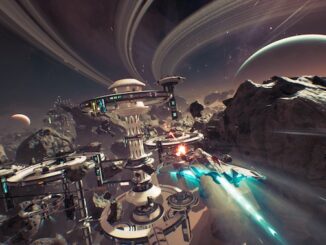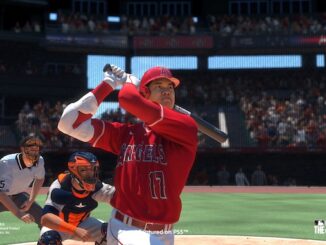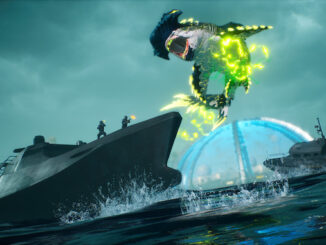Our review of The Last Guardian video game that was designed & directed by Fumito Ueda and developed by genDESIGN and SIE Japan Studio and published by Sony Interactive Entertainment for the PlayStation 4.
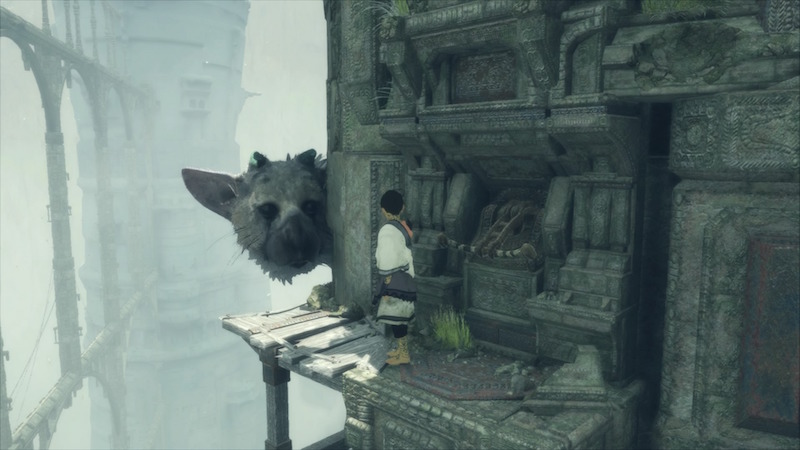
WHAT IS IT?
An epic puzzle-platformer, and the hotly anticipated third entry in Sony’s ICO trilogy.
IS IT GOOD?
Yes, very. But it’s also surprisingly limited in scope, especially for something that arrives after a notoriously long development period.
WHO SHOULD PLAY IT?
Art lovers. Gamers. Anyone who’s ever wondered how a Clifford the Big Red Dog sim might feel.
SPECS
Developer: Sony Japan Studio
Platform: PlayStation 4
Release Date: December 6, 2016
Single-Player
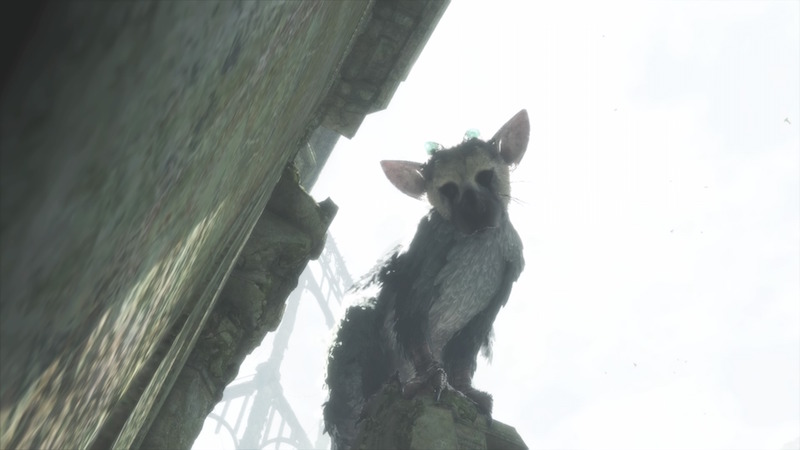
VERTIGO
Arriving nearly ten years after it was first announced, The Last Guardian is a beautiful, enthralling, and frustratingly flawed experience. But even if it fails to live up to the hype, it nevertheless stands on its own as a memorable PlayStation 4 title.
The Last Guardian is a sequel of sorts, inhabiting the same world and revisiting many of the themes and mechanics of its illustrious predecessors, ICO and Shadow of the Colossus. The fact that Guardian even survived a decade of development hell is testament to the goodwill engendered by those two masterpieces, and the respect afforded to director Fumito Ueda.
Guardian puts you in control of a young boy who befriends a remarkable creature, a sort of giant cat-bird with glowing green horns. Together, you navigate the crumbling and vertigo-inducing ruins of an ancient city, evading mysterious energy beings along the way. At its core, the game is a puzzle-platformer, one in which you must search out increasingly complex escape routes for yourself and your giant friend.
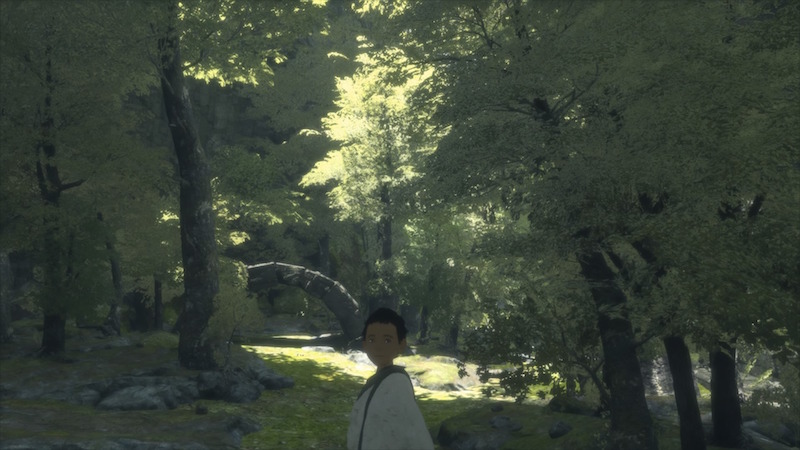
And what a friend it is. The boy calls it Trico (a nod to the series origins), and the game implies it’s a griffin, one of those mythical creatures from Greek legend. Whatever it is, Trico is the game. It’s a friend, foe, environmental hazard, and means of attack. It is also, most significantly, a moving platform, one you cling to as it clambers across the decaying landscape, holding your breath each time it makes yet another epic leap.
Really, Guardian lives and dies by Trico, and mercifully – this cannot be underscored enough – Trico works. Not perfectly mind you, but the creature looks great, moves believably, and has some extremely sophisticated AI. Its pathfinding is almost as good as the Xenomorph in Alien: Isolation (another game that hinges on one expertly-programmed creature), but its mundane behaviours are equally fun to watch. Among other things, Trico will play with its food, whimper when you’re out of sight, and lean down so you can nuzzle its face. Sometimes it won’t obey you and you’ll get frustrated, not because of bad AI but because it feels like a real pet. I love Trico, and so will you.
You will also love the look and feel of the game. Simply put: Guardian is beautiful. The environmental design is wonderful, all crumbling stone and overgrown castles, and the graphics are stunning. It’s easy to stop moving and admire the scenery, even if the frame-rate occasionally dips or some wonky collision detection threatens to spoil the mood.
That said, The Last Guardian is a victim of its own making, and at least part of the blame lies with Ueda, the director.
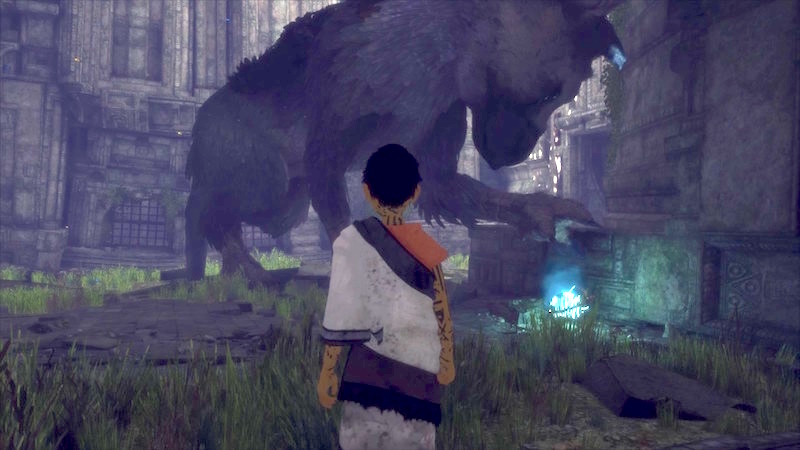
DEJA VU
Ueda is that rare thing: a video game auteur. Unfortunately, as an auteur, he seems to be running out of ideas. As mentioned, Guardian is a sequel, third in a series that began with ICO, an absolute stunner of a PS2 game. In ICO, you control a young boy (check) with horns (check) escaping energy creatures (check) across vertigo-inducing ruins (check) with a sophisticated AI companion (check). Even the ability to pet Trico with the push of a button is a simple derivative of the “hold hands” button from ICO.
In other words, Guardian resembles its PS2 grand-daddy so much I’m honestly tempted to call it a remake. Yes, the creature is a feat of programming, but aside from Trico, there’s nothing new here. You run, you climb, you pull levers. You carry things over to other things that send sparks of energy into other things. Sure, some of this is deliberate (and it’s fun spotting the references), but just like The Force Awakens, the nostalgia eventually gives way to an unwelcome sense of déjà vu.
Compare Guardian to its immediate predecessor, Shadow of the Colossus, and this failure to innovate becomes even more profound. That 2005 title remains my all-time favourite video game, precisely because it took the ICO model and did something wholly unique with it. Yes, Colossus has energy creatures and an AI companion and lots of climbing of rocky structures. Yes, its story is elegantly sophisticated, showing rather than telling (this is Ueda’s trademark, which he calls “design by subtraction”). But unlike ICO or Guardian, the puzzle-platforming consists entirely of thrilling boss battles against giant creatures that you must climb in order to defeat. Heck, even the lovely Trico can’t help but feeling like a step backwards, coming as it does some eleven years after those incredible colossi.
Colossus was also a game of surprises, something that Guardian sorely lacks. Where Colossus offered something new and mind-blowing every time you embarked on an expedition, Guardian requires you to do roughly the same four things, in the same general environment, all game long. Run, climb, shout at Trico, pull levers, repeat. That’s not bad per se – again, see ICO – but it’s still a disappointment.
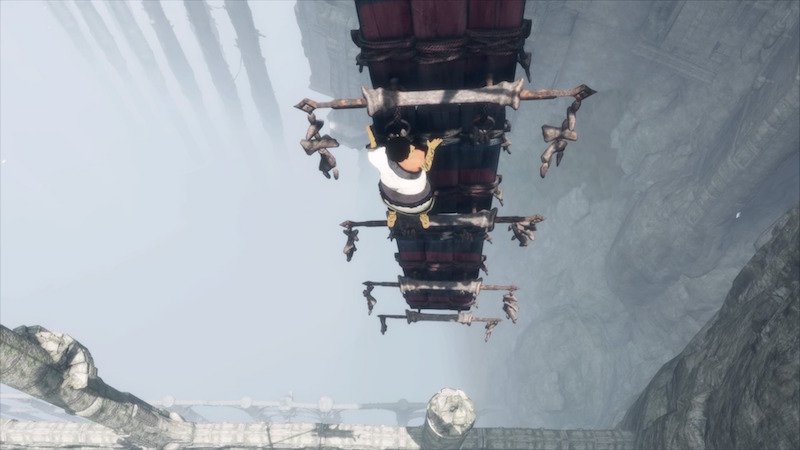
Indeed, and it seems crazy to write this about the giant cat-bird game, but The Last Guardian actually feels constrained, even small. You’ll spend the first half of the game waiting for it to “burst open”, to offer something new or unexpected, and then, somewhere around hour six, begin to grudgingly accept that isn’t going to happen. It’s disheartening, to say the least.
Then there are the minor gripes, two of which fly so obnoxiously in the face of Ueda’s design philosophy, I wonder if they weren’t corporate-mandated on him somewhere at the tail end of those ten years. For example, for such a beautiful game, it has an incomprehensible tendency to display a controller overlay every 15 seconds. Even worse, despite the overall story being suitably enigmatic, the game has a (shudder) narrator, one who offers such keen insights as, “Trico was hungry”, “The way was blocked”, or “I needed to find a lever”. It’s like they wrote a tutorial mode and then forgot to shut it off. There are also some graphical annoyances, like the camera and/or animation freaking out when the boy is riding on Trico.
So in other words, The Last Guardian is a beautiful but flawed experience. It has taken way too long considering what it ultimately offers – by the way, Papo & Yo did the monster companion thing first, and on 1/100th of the budget – and it does so without offering any new takes on what came before.
That said, it is still very good. I was engrossed throughout, and once I reconciled myself to the fact that, yes, this was the entire scope of the game, and no, there weren’t any surprises waiting around the corner, I thoroughly enjoyed myself. If you’ve played ICO and/or Shadow of the Colossus, try this out and enjoy the nostalgia/déjà vu trip. If you haven’t, you may even love it a bit more.
The Last Guardian is out now on PS4.
Shadow of the Colossus and ICO are better and cheaper and available on PS Now for PS4, as well as in HD remasters on PS3.
***
Final score: 7/10 cat-creature-things.
Visit the Playstation official page for The Last Guardian HERE.

